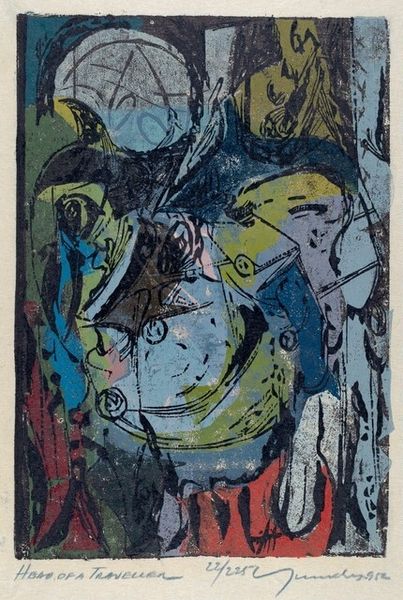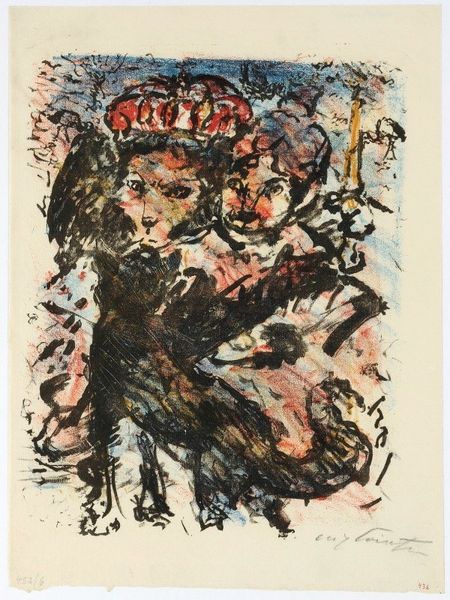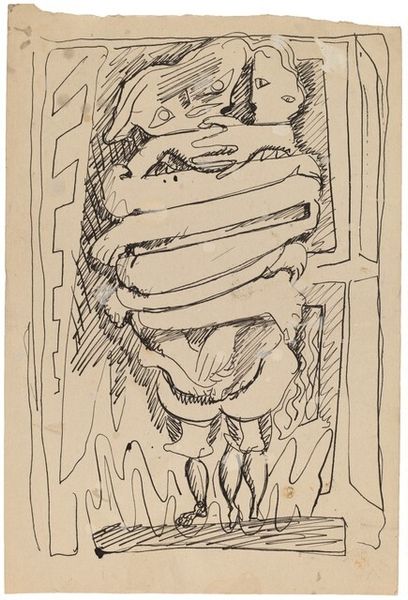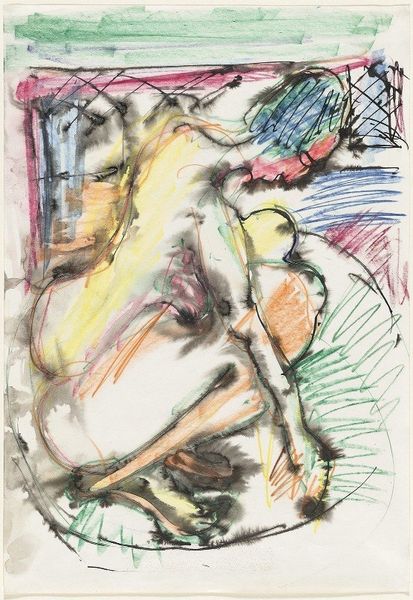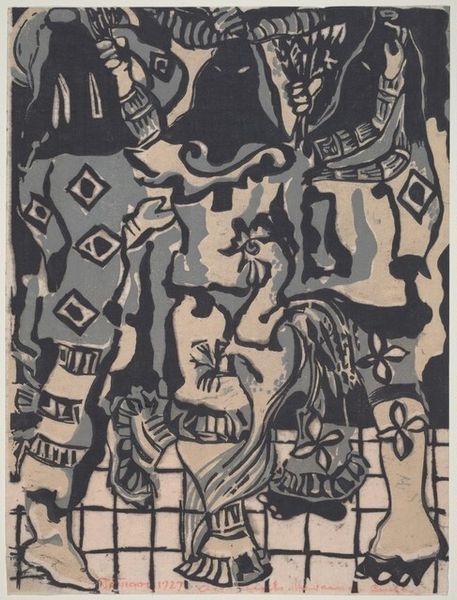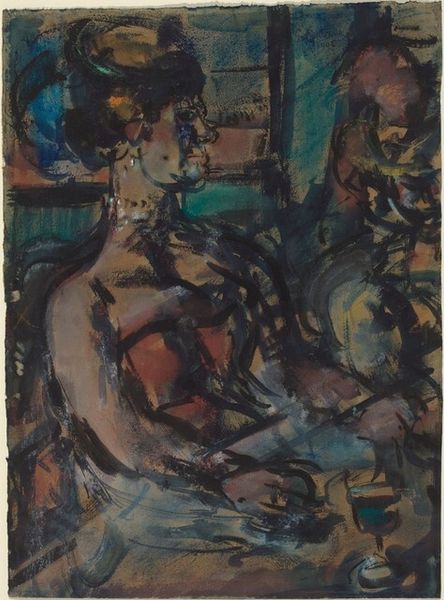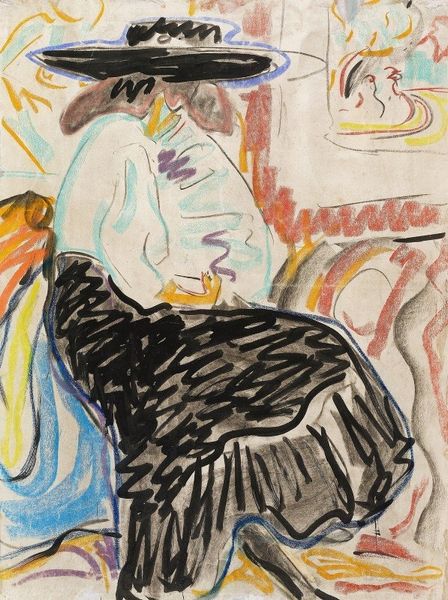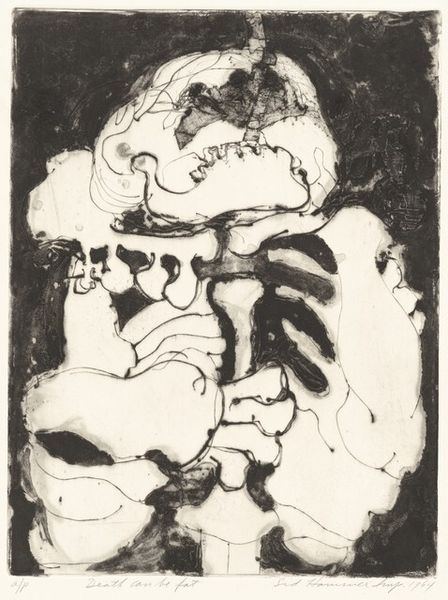
Dimensions: sheet: 40.8 x 26.1 cm (16 1/16 x 10 1/4 in.)
Copyright: National Gallery of Art: CC0 1.0
Curator: Marc Chagall created this vibrant piece titled "Small Composition for John" in 1957, employing watercolor and ink to bring his distinctive vision to life. Editor: Whoa. It's a little overwhelming at first glance, almost like a beautiful explosion on paper! There’s so much going on. The colors kind of bleed into each other, yet the black outlines give it this strange sort of... structure. Curator: Indeed. Chagall often intertwined personal and cultural narratives. Considering its post-impressionist and expressionist styles, we can examine how the political climate and artistic experimentation shaped his choices in figuration and landscape portrayal. His distinct dreamlike visual language created through form and symbolism might serve as a critical dialogue to understand this period. Editor: Dreamlike is the perfect word! The more I look, the more I see a sort of playful chaos. Is that a rooster in the middle? And there's a face... or part of a face... tucked on the left, almost hidden by the leaves. It reminds me of stumbling upon a secret garden populated by strange and wonderful creatures. It almost feels... childlike, but knowing it’s Chagall, I assume there is also much depth behind that first impression. Curator: Absolutely, viewing this piece, we might delve into themes of identity, displacement, and the integration of folk traditions within modernist art. The role of symbolism, particularly the rooster—a recurring emblem in Chagall's work representing vitality or even a connection to his Russian-Jewish heritage—provides a window into his broader commentary. Editor: Thinking about folk traditions... yes! It does have that sense of storytelling, doesn't it? Like a page torn from an old fairytale book, full of symbolic meanings. It has a weightlessness despite all the figures overlapping; an otherworldly atmosphere! The use of watercolour and ink gives a beautiful ethereal feel to the work. Curator: Analyzing how gendered dynamics and power intersect with themes in his composition enhances our understanding of the narratives Chagall constructs. By interrogating who 'John' is in relation to the visual narrative, we might consider a multifaceted range of interpretations about artistic legacy and reception in a changing world. Editor: Legacy is an interesting point! It also kind of prompts a response: I want to pick up my brush and paint something messy and exuberant and utterly, unapologetically "me". I guess great art has the power to light your fire... isn’t that part of the legacy in itself?
Comments
No comments
Be the first to comment and join the conversation on the ultimate creative platform.
